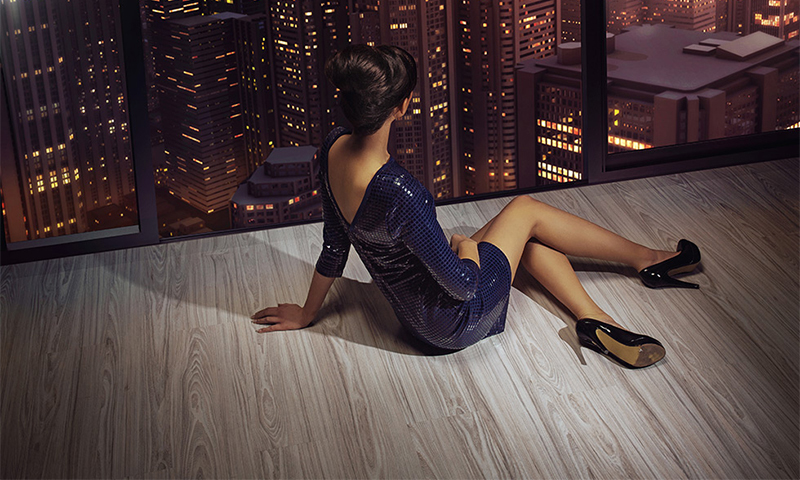We have had a difficult relationship with carpets: then we “wrap” the whole apartment with them to the ceiling, then we drive them out of the dwelling for many years. And nevertheless any room looks cozier if there is a fluffy, soft covering on the floor, on which one just wants to walk barefoot. That is why carpets are gradually returning to our homes, without changing a bit during their absence. However, they are still different in quality from the products of twenty years ago. Now there are new materials and production technologies, in which many of us have not yet figured out. Let's make up for lost time and get acquainted with the novelties on the carpet market in order to buy the most beautiful, practical and durable.

Content:
The best carpet manufacturers - which company to choose
High-quality carpet from a famous brand can serve faithfully for decades without losing its visual appeal. Some companies even give a guarantee on their products (up to 50 years). Unfortunately, many still continue to buy low-grade carpets and carpets of dubious origin due to their cheapness.
With this approach, it is possible to save only here and now, and after 3-5 years the budget mat has to be taken away to the garage for permanent storage and the next product to be bought is more decent.
You can purchase coverage once and for a lifetime if you choose a truly durable product from a reputable manufacturer:
- Wool & Silk;
- Longbarn Company;
- MID;
- Luzern;
- Radici Pietro.
Products of these companies deservedly occupy the first places in our ranking of the best. And yet, to warm your feet in the winter and decorate the interior will not be the name of the manufacturer, so when buying a carpet in an apartment you will have to take into account several other criteria.
Types of carpets
Synthetic
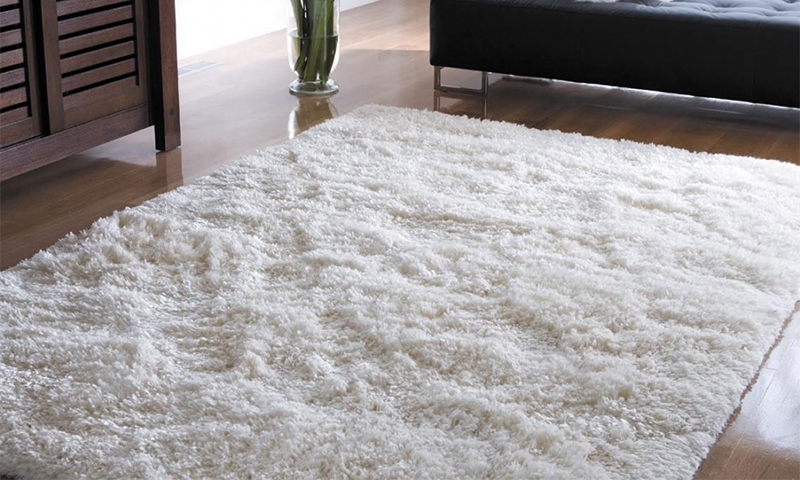
Artificial carpets are cheaper because they are made of inexpensive synthetic fibers (polyamide, acrylic, polyester, polypropylene, terclone). But if you come across a quality model from a good manufacturer, even such coverage will delight you with a long service life.
The individual characteristics of an artificial carpet will depend on the specific type of material, and yet the main advantages and disadvantages of all synthetic products can be identified.
Pros:
- Do not cause allergies;
- Moisture and wear resistant;
- Easy carry both wet and dry cleaning;
- Dry quickly after washing;
- Generally do not fade with time;
- Pleasant to the touch;
- Available at a price.
Minuses:
- They accumulate static electricity, collecting all the dust;
- They retain heat poorly, that is, they perform exclusively decorative functions.
Natural
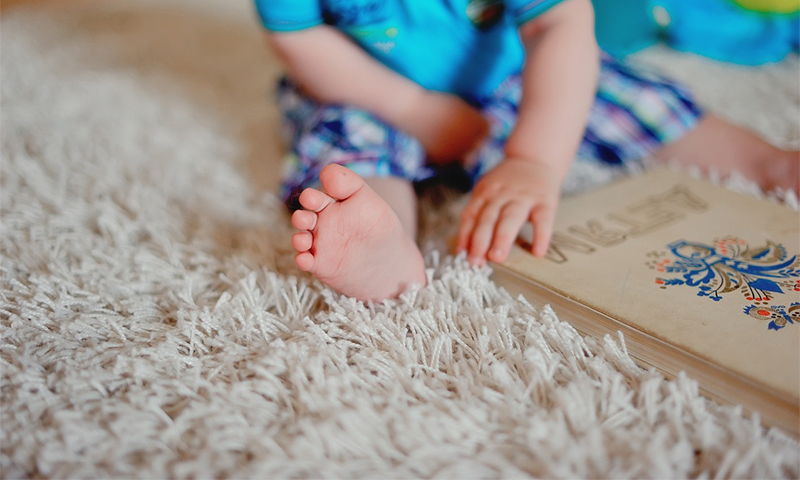
Carpets made of cotton, sisal, flax, silk or wool fall into this category. With some stretch, viscose can be attributed here - although it is an artificial material, it was created exclusively from natural cellulose fibers.
Unlike synthetics, such carpets can already affect the microclimate in the room, regulating the humidity of the air and retaining heat. Natural material coatings always look impeccably stylish and create a feeling of comfort in the house, but they are much more expensive than artificial ones.
Pros:
- Absolutely eco-friendly;
- Long service life with proper care;
- Always look beautiful and expensive;
- Excellent heat retention;
- Possess good sound insulating properties (with sufficient thickness);
- Soft to the touch.
Minuses:
- Some natural materials (eg wool) can cause allergies;
- Cost very expensive.
Natural carpets have one more property - high hygroscopicity.On the one hand, this is bad, since the coating immediately absorbs the spilled water and dries soon. And this is fraught with stale smell and even mildew.
The same problem will be found during washing or cleaning with a washing vacuum cleaner - it will take more than one day to wait for the carpet to completely dry. But it is precisely because of its hygroscopic nature that natural coatings provide a more comfortable climate in the house, independently regulating the humidity of the air.
Mixed
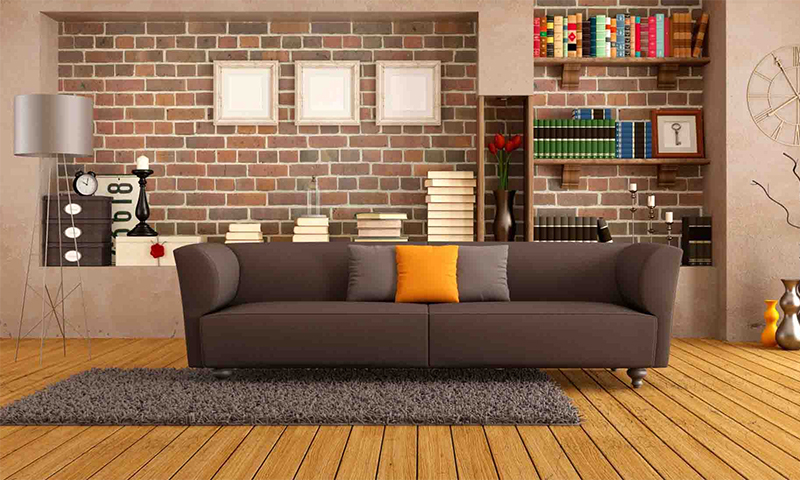
The combination of natural and artificial raw materials allows to obtain new materials of the middle price segment, combining all the advantages of synthetics and naturalk. Usually, in the production of carpets, 20-30% synthetics are added to warm wool, or vice versa.
Pros:
- Possess low, but sufficient hygroscopicity;
- Resistant to fire, although they still can smolder;
- Warm and pleasant to the touch;
- Differ in the high durability and long service life;
- They cost almost half as much as natural wool carpets.
Minuses:
- Cost over 100% synthetic;
- May still cause allergic reactions.
Also today on sale can be found mixed carpets, woven from wool and silk fibers. Unlike semi-synthetics, these models turn out to be the most expensive, but they look kingly.
Carpet selection options

Material
Synthetic:
1. Nylon (polyamide fiber) is a rather elastic material with high strength and durability, it is characterized by a bright luster pile. The service life of a nylon carpet will be at least 10-15 years.
2. Acrylic - despite its artificial origin, its characteristics are very close to natural wool. But it does not cause allergic reactions, moreover, unlike other synthetic materials, it does not accumulate static electricity. Alas, in 6-8 years it will have to be replaced.
3. Polyester (polyester fiber) is a bit harsh, but at the same time unexpectedly warm, careless in care, has good color fastness. But his life is the same as that of acrylic material.
4. Polypropylene - convincingly imitates wool, while quietly tolerating any kind of cleaning and is very cheap.
Natural:
1. Wool is warm and elastic, has a long service life, but at high humidity it can be affected by moth larvae and even mold. The most common raw material for the manufacture of such carpets is sheep wool, but according to the characteristics of the camel is better.
2. Cotton - is highly hygroscopic and not very difficult to clean. But he clearly lacks his own strength, so wool is often added to cotton carpets.
3. Silk - very dense and durable carpets are made of it, which are not deformed under the legs of furniture. They perfectly keep their shape and do not cause allergies, while they are distinguished by relatively low weight, but they are unrealistically expensive.
4. Viscose - can boast a good resistance to abrasion, while its cost is low, and the appearance is slightly inferior to natural silk.
Density
The first thing you need to pay attention to when choosing a carpet is the density of its mating, that is, the number of knots per unit area of coverage. This is one of the main indicators of product quality, which is reflected in its service life.
Allocate a special classification of carpets for knitting density:
1. Low (the number of knots ranges from 38 to 100 thousand per square meter) - unpretentious, but practical ethno-style carpets made of coarse and thick natural yarns have such a density. Here it is better to abandon products with a long nap, because due to the low density it will constantly wrinkle.
2. The average (100-325 thousand / sq. M) - the most common and fairly soft coating with a pleasant nap. Can be synthetic, mixed or natural.
3. High density (from 325 thousand to a million knots per sq. M) is a sign of an expensive and very wear-resistant carpet of thin filaments.
4. Exceptionally dense (1-1.5 million / sq.m) - this indicator can be achieved only when knitting thin silk carpets. Due to the miniature size of pile knots, patterns can be created from them that are unsurpassed in the degree of detail.
Approximately determine the density of pile carpet can be a simple way - bending it in half. With a rare mating on the fold, the base is easily visible, but the denser the nodules are located, the harder it will be to consider.
Pile Type
The decorative, noise and heat-insulating properties of the carpet, the tactile sensations when walking on it, as well as the characteristics of the care of the coating depend on the type of pile.
There are many design options for the fleecy surface:
1. Velor - so called split sheared pile of small length (about 8 mm). It easily gets dirty, but only on the surface, so it is cleaned without problems.
2. Saxony - in contrast to velor, the yarn for this pile goes a little longer, and not fluffed, but twisted into a thread. This carpet looks impressive even in one color and is particularly soft.
3. Frieze - a very long twisted pile, secured by heat treatment. It can be split, loop or assembled from threads of different thickness. The carpet frize looks “shaggy” outwardly, but it is pleasant to walk on it. Dirt does not particularly cling to it, but the garbage through a rare pile falls to its very foundation, so that the coating every six months will require serious cleaning.
4. Single-level loopback - such carpets are considered one of the most "hardy", but clean them terribly difficult.
5. Multilevel loop - from the previous pile differs only in different lengths of loops, creating a three-dimensional pattern.
6. Katlup - perhaps the most unpretentious type of pile of all. Yes, and it looks interesting, because it combines small loops with split threads.
Do not forget about the lint-free carpets. These include:
1. Palace;
2. Sumac;
3. Knitted (knitted) cover.
They practically do not jam with furniture legs and are highly resistant to abrasion. Lint-free products are also easy to clean, and some even have a double-sided design, that is, a hopelessly damaged carpet can simply be turned upside down and used further.
Size and shape
Standard length and width of carpets are usually tied to the ratio of the sides of rooms in typical apartments, so factory products often go in sizes from 1.7 x 2.4 m to 3 x 4 m. But there are also other options.
When choosing, you need to focus on your taste and some features of the interior:
1. If the main zones differ in style or color, and the carpet must tie them together, choose a product the width of the entire room, leaving 20-30 cm around the perimeter free.
2. To accentuate one particular area (play, television corner) you need a small rug. He can either lie directly in front of the furniture, or beneath it - the decision is yours.
3. In a half-empty room, where there is nothing except a carpet on the floor, any covering in size is slightly smaller than the free “patch”, but no wider than 2.5-3 m.
4. The dining group in the dining room is always fully placed on the carpet, and its edges should extend beyond the limits of the moved chairs by 60-70 cm.
As for the form, it can follow the contours of the room itself or the free floor space. However, the violation of this rule is a favorite method of modern interior designers.
Colors
Here again, you can rely on your own taste, although we should not forget about the basic laws of color:
1. A light carpet visually expands a cramped room, but only if it occupies the entire surface of the floor from wall to wall.
2. Dark coatings work exactly the opposite. However, if you choose a small rug and lay it on light linoleum, it will turn into an interesting accent.
3. The colorful canvases are suitable only for rooms with windows to the North or the West - in bright sunlight they will lose all their beauty.
4. If there is poor lighting in the room, any dark carpet will appear black.
Which carpet to choose
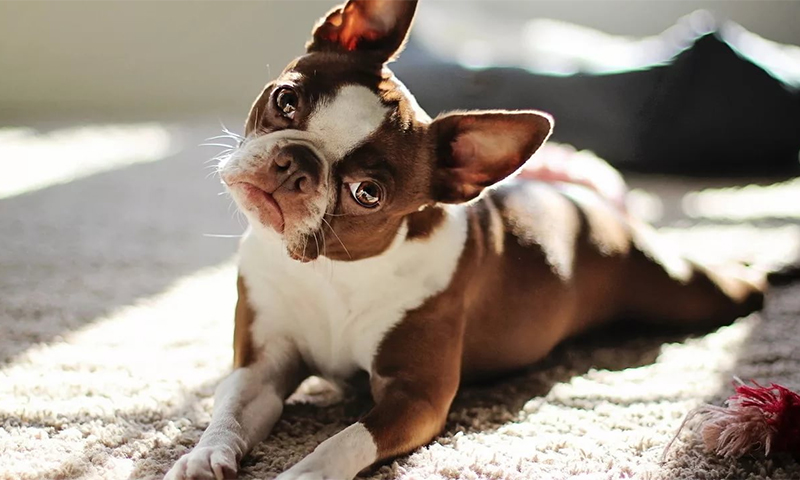
1. Cheap synthetic carpets with a short nap or without it are suitable for anteroom. Look for models with a colorful pattern, on which pollution is less visible, and try to choose the aspect ratio so that it coincides with the size of the hallway itself.
2. In the nursery and bedroom, take a woolen carpet with a high dense pile. If the house has allergies, you can replace it with a product of acrylic or polypropylene. Coloring look calm, preferring pastel colors. And choosing a size, try to find a model that will not be directly under the bed.
3. In the living room you can lay a beautiful and expensive carpet of wool or even silk. If there is not enough money for such a purchase, choose a more affordable option from velor, synthetics or mixed materials. Size, shape and color will have to be selected very carefully, so that the coating fits well into the interior.
4. For zoning a large area (for example, a studio apartment), you will need several rugs up to 1.5–3 m in size. It is desirable that they have a color that contrasts with the floor and volume pile.
5. In the kitchen or dining room, carpet is laid only under the dining group. Here you will need a coating with a very short or short pile or without it. In this case, the product in shape should exactly repeat the silhouette of the table and be proportional to its size. Suitable materials: synthetic, cotton, viscose.
How much is the carpet

1. Synthetic carpets start from 300 rubles for a canvas with a size of 0.6x1.1 m and reach 33 thousand for a floor area of 60 squares.
2. A bedside rug made of viscose with a size of 0.7 x1.05 m will cost you no less than 1,200 rubles. Luxurious product 3x4 m will pull in the amount of 28 to 192 thousand.
3. A small cotton mat for a nursery can be bought for 1000-1200 rubles. A canvas measuring 3x4 meters will be more expensive - from 20 to 40 thousand.
4. The cost of wool carpets starts from 1000 rubles and easily skips the bar to 400 thousand.
5. Silk products cost no less than 24 thousand rubles, and prices for the most luxurious models are lost somewhere in transcendental heights - even 1-2 million for them is not the limit.
It will be interesting to friends too





